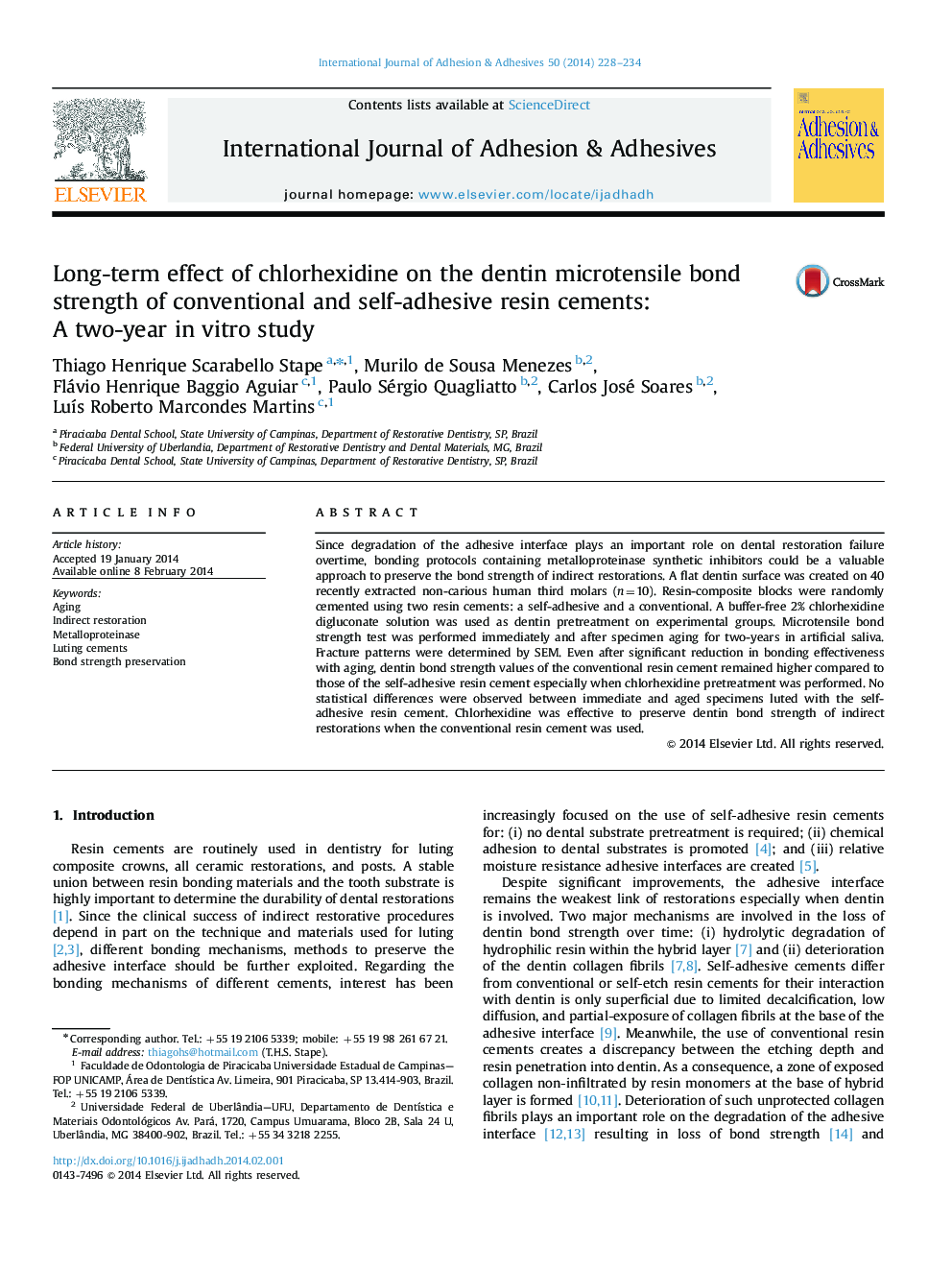| Article ID | Journal | Published Year | Pages | File Type |
|---|---|---|---|---|
| 776761 | International Journal of Adhesion and Adhesives | 2014 | 7 Pages |
Since degradation of the adhesive interface plays an important role on dental restoration failure overtime, bonding protocols containing metalloproteinase synthetic inhibitors could be a valuable approach to preserve the bond strength of indirect restorations. A flat dentin surface was created on 40 recently extracted non-carious human third molars (n=10). Resin-composite blocks were randomly cemented using two resin cements: a self-adhesive and a conventional. A buffer-free 2% chlorhexidine digluconate solution was used as dentin pretreatment on experimental groups. Microtensile bond strength test was performed immediately and after specimen aging for two-years in artificial saliva. Fracture patterns were determined by SEM. Even after significant reduction in bonding effectiveness with aging, dentin bond strength values of the conventional resin cement remained higher compared to those of the self-adhesive resin cement especially when chlorhexidine pretreatment was performed. No statistical differences were observed between immediate and aged specimens luted with the self-adhesive resin cement. Chlorhexidine was effective to preserve dentin bond strength of indirect restorations when the conventional resin cement was used.
